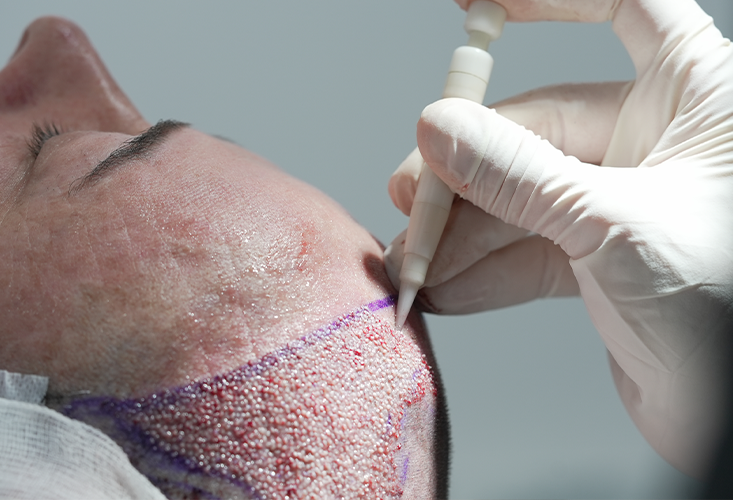Yes, the method used in a hair transplant can make a significant difference in the outcomes. The three most common techniques are: FUE (Follicular Unit Extraction): FUT (Follicular Unit Transplantation): DHI (Direct Hair Implantation): Each method has its pros and cons, and the best choice often depends on individual factors like hair loss pattern, donor hair quality, and personal preference. Ultimately, the skill of the surgeon and the technique used can greatly influence the final results, including hair density and natural appearance. Shock hair loss after a hair transplant is a common phenomenon where transplanted hair falls out temporarily due to the trauma of the procedure. This occurs as hair follicles enter a resting phase (telogen) before the regrowth phase. To treat it, you can: Ultimately, shock hair loss is often a normal part of the healing process.
Individual hair follicles are harvested from the donor area and transplanted to the recipient area. This method is minimally invasive, leaves small scars, and generally has an average recovery time.
A strip of skin containing hair follicles is removed from the donor area, and the follicles are then dissected and transplanted. This method can yield a larger number of grafts in a single session but may leave a linear scar and has a longer recovery time.
The most recent technique in the hair transplant field. In this method, a specialized tool is used to extract hair follicles from the donor area and implant them immediately into the scalp using special pens. This technique allows for the direct implantation of hair follicles into the recipient area without the need for incisions and with a fast recovery time. What Is Shock Hair Loss? How to Treat It?




